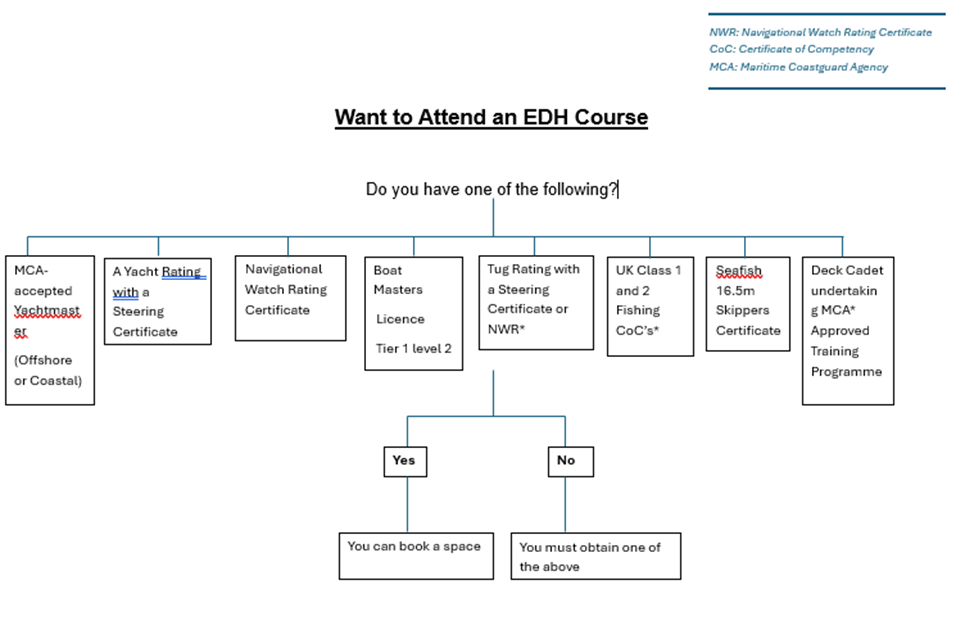Efficient Deck Hand
content

If you do have one of the above then you can book a space.
If you do not then you must first obtain one of the above before booking a space; we are always happy to help advise.
To obtain the full Efficient Deckhand Certificate
So, you have one of the above pre-requisites and you're on a course; what else do you need?
- STCW Personal Survival Techniques / Basic Sea Survival
- STCW Fire Prevention and Fire Fighting
- STCW Elementary First Aid
- STCW Personal Safety and Social Responsibilities
- ENG 1 / ML5 Medical
- 6 months sea service in vessels more than 15m.
- Sea service in category C and D waters will be accepted at full rate